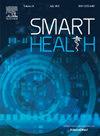Background parenchymal uptake classification using deep transfer learning on digital mammograms
Q2 Health Professions
引用次数: 0
Abstract
Background parenchymal uptake (BPU) in fibroglandular tissue on a molecular breast image (MBI) has been shown to be a strong risk factor for breast cancer and complementary to mammographic density. However, MBI is generally performed on women with dense breasts and only available at institutions with nuclear medicine capabilities, limiting the utility of this measure in routine breast screening and risk assessment. Digital mammography is used for routine breast screening. Our goal was to evaluate whether BPU features could be identified from digital mammograms (DMs) using deep transfer learning. Specifically, we identified a cohort of about 2000 women from a breast screening center who had DM and MBI performed at the same time period and trained models on DMs to classify BPU categories. We consider two types of classification problems in this work: a five-category classification of BPU and two combined classes. We designed and implemented machine learning algorithms leveraging state-of-the-art pre-trained deep neural networks, evaluated these algorithms on the collected data based using metrics such as accuracy, F1-score, and AUROC, and provided visual explanations using saliency mapping and gradient-weighted class activation mapping (GradCAM). Our results show that, among the experimented models, WideResNet-50 demonstrates the best performance on a hold-out test set with 58% accuracy, 0.82 micro-average AUROC and 0.72 macro-average AUROC on the five-category classification, while ResNet-18 comes out on top with 77% accuracy, 0.86 AUROC and 0.77 F1-score on the binary categorization. We also found that incorporating age, body mass index (BMI) and menopausal status improved classification of BPU compared to DM alone.
背景:基于深度迁移学习的数字化乳房x光片实质摄取分类
背景:在分子乳腺图像(MBI)上纤维腺组织的实质摄取(BPU)已被证明是乳腺癌的一个强大的危险因素,并与乳房x线摄影密度互补。然而,MBI通常是对乳房致密的妇女进行的,而且只有在具有核医学能力的机构才能进行,这限制了这项措施在常规乳房筛查和风险评估中的效用。数字乳房x线照相术用于常规乳房筛查。我们的目标是评估是否可以使用深度迁移学习从数字乳房x光片(dm)中识别BPU特征。具体来说,我们从一个乳房筛查中心确定了一个大约2000名女性的队列,这些女性在同一时期接受了糖尿病和MBI,并训练了DM模型来分类BPU类别。在这项工作中,我们考虑了两种类型的分类问题:BPU的五类分类和两个组合类。我们设计并实现了利用最先进的预训练深度神经网络的机器学习算法,使用精确度、f1分数和AUROC等指标在收集的数据上评估这些算法,并使用显著性映射和梯度加权类激活映射(GradCAM)提供可视化解释。结果表明,在实验模型中,WideResNet-50在hold-out测试集上表现最佳,在五类分类上的准确率为58%,微观平均AUROC为0.82,宏观平均AUROC为0.72,而ResNet-18在二元分类上的准确率为77%,AUROC为0.86,f1得分为0.77。我们还发现,与单独治疗糖尿病相比,结合年龄、体重指数(BMI)和绝经状态可改善BPU的分类。
本文章由计算机程序翻译,如有差异,请以英文原文为准。
求助全文
约1分钟内获得全文
求助全文

 求助内容:
求助内容: 应助结果提醒方式:
应助结果提醒方式:


